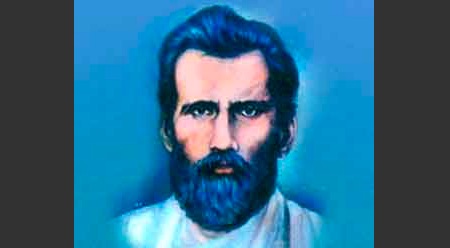Ten Incidents That Define ‘Jewel Of Odisha’ Gopabandhu Das

Bhubaneswar: Utkalmani Gopabandhu Das was born on October 9, 1877, at Suando near Sakshigopal in Odisha’s Puri district. A freedom fighter, educationist, poet and social reformer, he championed the cause of statehood of Orissa (now Odisha) and fought to bring the Odia-speaking people in the Madras, Bengal and Bihar states into one fold to secure their rights and privileges, earning him the title of ‘Utkalmani’ (Jewel of Utkal).
His birthplace is currently being renovated and developed. The ancestral home of the eminent social thinker will be converted into a museum and a 15-feet bronze statue of Utkalamani will be installed soon at Suando as part of the state government’s plan to transform it into a heritage village. The road from Pattanaikia Chhaka along NH-316 connecting to the village of Utkalmani is also being widened under the transformation plan prepared by the Indian National Trust for Art Cultural Heritage (Intach.
On his birth anniversary, Odisha Bytes pays homage to this great son of the soil by highlighting 10 notable incidents from his life:
>> While still in school, the inadequate response of authorities for cholera victims prompted him to start a voluntary corps Puri Seva Samiti. This movement later led to the establishment of a separate hospital for cholera patients at Puri.
>> He attended Ravenshaw College, Cuttack. During this period, he started Kartavya Bodhini Samiti (Duty Awakening Society) to encourage his friends to do their duty as citizens and take on social, economic and political problems.
>> While pursuing his LLB degree in Kolkata, he started a labour union and set up night schools for Odia labourers and cooks. He came in contact with the Vande Mataram group which infused him with the Swadeshi spirit. His new mission was to reform society by improving the educational system.
>> Gopabandhu’s political exposure began with Utkala Sammilani in 1903, but he persuaded others to merge this with the National Congress to make the Odia movement a part of the Indian National Movement. Thus he became the founder president of Congress in Odisha. He was imprisoned several times for participating in the freedom movement.
>> Gopabandhu established his famous Satyavadi Vana Vidyalaya at Sakshi Gopal near Puri in 1909. The place he selected for his school was a ‘Tapovan’ in a sylvan natural surroundings of shady Bakul Chhurian groves with profuse fragrant flowers. The open-air school made laudable experiments in diversified curriculum, community approach in living and learning, and social service. These innovations were subsequently tried out by John Dewey in America and were popularized throughout the world.
>> The teachers he selected for his school were a team of devoted workers with high intellectual calibre and a spirit of dedication, patriotism and sacrifice. Among them were the famous “Big Five” popularly known as Panchasakhal—Gopabadhu Das, Nilakantha Das, Godavarish Mishra, Krupasindhu Mishra and Acharya Harihar Das. They were the forerunners of the socio-cultural renaissance and pioneers of national education in the state.
>> Gopabandhu’s high ideals and concern for the poor also greatly influenced Mahatma Gandhi. Once during a Congress party lunch, special arrangements were made for Gandhiji and Gopabandhu to sit at a table. But Gopabandhu opted to sit with others on the ground. Following his inspiration, Gandhiji started wearing a dhoti so as to come closer to the poor.
>> Once, he was leading a team to aid flood victims when he heard of his son’s serious illness but stayed put to serve the locals rather than return home.
>> Gopabandhu was a pioneer of Odia journalism and made it suitable for the common man. He published a monthly magazine called ‘Satyabadi’ in 1914. On October 4, 1919, he started the weekly newspaper ‘The Samaja’, which went on to become the most popular newspaper in Odisha.
>> Utkalmani’s poems and novels were marked by a nationalistic fervour, encouraging the youth to serve for national integration. While in Hazaribagh Jail in 1922-24, he wrote a heart-touching novel called ‘Bandira Atmakatha’ (Biography of a Prisoner) expressing his love for the people of Odisha. In it, he wrote:
“Misu mora deha e desha matire, desabasi chali jaantu pethire / Desara swarajya pathe jete gada, misu tahin padi mora mansa hada” (Let my body mingle in the dust of my motherland and let my countrymen walk across it, and let my flesh and bones fill in the potholes of my country’s self-independence).
His other literary works include ‘Abakasha Chinta’, ‘Go-Mahatmay’, ‘Nachiketa Upakhyana’, ‘Karakabita’ and ‘Dharmapada’.
>> Gopabandhu’s death also came in the service of the people. He fell ill while attending a fundraiser in Lahore for the flood victims of Odisha. He never recovered from the illness and died on June 17, 1928.

Comments are closed.